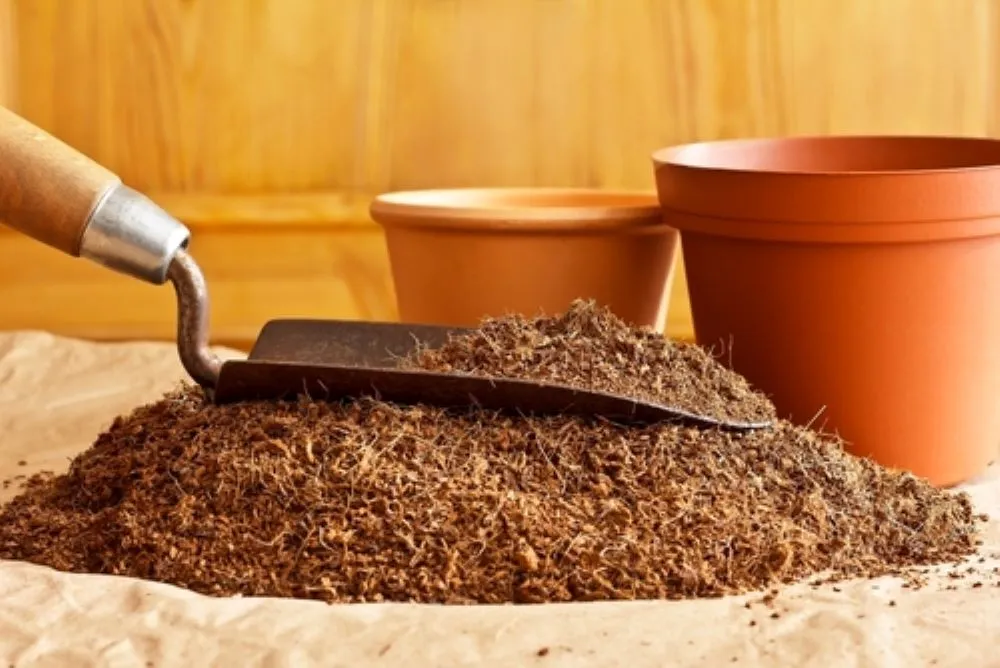 ਵਾਪਸ
ਵਾਪਸ

Coconut is a tropical crop which prefers humid climate. India is the world’s leading producer of coconuts. Kerala, Tamil Nadu, Karnataka, and Andhra Pradesh are major coconut growing states which shares above 90 percent in area and production. Other producing states are West Bengal, Gujarat and Odisha.
The coconut tree is called Kalpavriksha because it has many uses from its each part. In our country, people traditionally use coconuts for making kernel products, extracting oil, and manufacturing coir. Apart from these, there are other coconut-based products that can be made and sold in the agricultural business. In this article, we will learn about some of these coconut-based products for agricultural business plans.

Coconut Kernel based products
Coconut Kernel based products

1.Virgin coconut oil
It’s the purest type of coconut oil, white in color and has a pleasant aroma. It is obtained from coconut milk and it hasn’t been chemically processed. Traditionally it extracted by boiling the coconut milk and later by mechanical screw presser. In modern days wet processing method is followed. Where Coconut milk is squeezed from the fresh kernels, and the oil is separated from the water using techniques like fermentation, boiling, refrigeration, enzymes, or a mechanical centrifuge. It is used as both edible oil and hair oil. The oil removed cakes can be used for cattle feed.


2.Desiccated coconut
It is dried and shriveled white portion of coconut kernels. It is prepared by cutting the coconut flesh into small piece shreds after removing its brown seed coat, then blanched and dried to remove most of its moisture content. Due to its readily available It is preferred more than the raw nuts. which is mainly used in the bakery and other food industries.




3.Coconut milk
It is milky white liquid obtained by squeezing fresh wet kernels with or without water. It is used in bakery products and flavoring the food items. It can be marketed in different flavors by adding rose, almond, pista, coffee, chocolate into it. Since it has more essential nutrients, vitamin – B3 compared to regular milk. It can marketed as alternate to dairy milk.






- Coconut milk powder
It is other form of coconut milk. In this preparation, obtained milk is mixed with maltodextrins and other emulsifiers. Then mixer is spray dried into fine powder using spray drier. It is used in place of coconut milk by adding water into it. It offers benefits such as a longer shelf life, convenient packaging, reduced storage space and easy usability.


- Coconut cream
It is the processed milk which extracted from fresh kernels. Its preparation involves extraction of coconut milk, addition of emulsifiers and stabilizers, then pasteurization at 95 degrees Celsius. It is instant product can used in food preparations and processed foods. It has shelf life upto 6 months.






6.Coconut chips
It is snack food prepared in different flavors like salted and sweetened forms. It is prepared through a process involving kernel slicing, blanching, osmotic dehydration, and drying.


Coconut water products
Coconut water products


1.Coconut Vinegar
It is prepared from fermented coconut water and can also made from sap of coconut flower. In this preparation, initially, the coconut water is mixed with sugar to achieve a 10 percent sugar level. Then for alcoholic fermentation the yeast is added into it. After the 4 to 5 days of initial fermentation, acetic acid bacteria are added to ferment the alcohol into acetic acid. Later the product is filtered, pasteurized and packed. It is used as preservative and flavoring agent in pickles, salads, sauces. It will be healthier alternative to synthetic vinegars.
- Coconut squash
It is soft drink and prepared by mixing coconut water, natural preservatives, lemon, sugar and ginger. It can be stored upto 3 months under controlled conditions.
- Coconut gel
It is a white to yellow jelly substance prepared from coconut water through a process of fermentation using acetobacter aceti subspecies xylinium. First coconut water has to be mixed with sugar and glacial acetic acid. Then boil the mixture for 10 minutes and cool it in a container. Add Acetobacter aceti bacteria to the container and cover it with a cloth, then allowing it for 3 weeks. Afterwards collect the jellies grown in the solution. Wash the jellies to remove acids and cut them into cube shapes. At last immerse them in flavoured sugar solution. It can be used in ice creams, fruit salads and other beverages.


Coconut inflorescence-based products
Coconut inflorescence-based products


1.Toddy
It is sweet, white color vascular sap comes from immature unopened coconut inflorescence when it is sliced. After it is collected from inflorescence it is filtered, pasteurized, and added with bio preservatives to preserve the product. It is used as a health drink and a rich source of sugars, minerals, vitamin and rich source of antioxidants. It can be stored upto two months at room temperature.
- Coconut jaggery
It is prepared by boil the toddy to 120 degrees Celsius for some time upto crystallizing point and cooled for solidification. The jaggery can be crystallized to produce fine granules of brown colored sugar which is more preferred by the customers. It has more nutritional and medicinal value.
- Coconut flower syrup
It is produced when toddy is heated and concentrated into syrup. It used as natural sweetener in food preparation and best alternative for white sugars. It is rich source of potassium, sodium and free from total fats and cholesterol. Hence it is safe for diabetic patients.


Coconut shell based products
Coconut shell based products


- Coconut shell charcoal
It is obtained by burning the shells with limited supply of air. It has high carbon content, low ash content, and long burning time. In average, 30,000 whole shells yield 1 ton of charcoal. Good coconut shell charcoal is uniformly dark with a clean shining fracture and produces a metallic sound, when beaten on hard surface. It used as cooking and industry fuel, adsorbent in petroleum and chemical Industries, soil amendments in agriculture and reducing agent in metallurgy.
- Activated carbon
Coconut shell charcoal is used as raw material in producing activated carbon. Here first the shells converted into charcoal by carbonization in burning furnace. Then charcoal is activated by reaction with steam at 900 to 1100 degree Celsius in heating furnace. It has uses in water filtration, air purification, skin care cosmetics and medical field.


Coconut Food products
Coconut Food products


- Coconut biscuits
It prepared with wheat and coconut powder. Different types can be made by adding butter, multigrain, oats, corn as main content. Coconut biscuits are highly nutritious with low calories and high fibre content. It helps to maintain glucose level in diabetic patients. It can store up to 3 months.
- Coconut candy
It is a sweet made with shriveled coconut kernels, coconut milk and jaggery. Its high fibre content keeps digestive system healthy.
- Coconut burfi
It is a popular sweet prepared by roasting the coconut kernels gratings, sugar, butter and sometimes flavored with cardamom, almonds, cashews.
.webp)

Coconut husk products
Coconut husk products
.webp)

- Coir fiber and yarns
It is obtained from the mesocarp of the coconut fruit. It can be extracted with or without retting process. Based on extraction process, long and short fibers, impurities the coir fiber is graded. It can be used to make twines, ropes, brooms, brushes, mats, carpets and geo textiles. Geo textile is a blanket which can be used to prevent erosion, weed growth and civil infrastructure projects.
- Coir pith
Coco peat is a non-fibrous, spongy, lightweight, corky substance that binds the coir fiber in coconut husk. It will be obtained during fiber extraction as by product. It retains moisture well hence it used as soil like growth medium, organic manure for agriculture purposes. It also used to make garden articles like pots, poles, hanging baskets and peat bricks, briquettes. Composting of coir pith reduces its sizes and converts unavailable plant nutrients to the available form for the plants. For composting, coir pith has to be heaped above soil. After moistening it, add urea in alternative layer of coir pith (5kg urea/ ton coir pith) as nitrogen source. And add microbial inoculums Pleurotus over the material. Then once in 10 days the whole heap should be turned properly. Water it regularly to maintain moisture. After 50-60 days compost will be ready for harvest.
The coconut-based industries will have steady growth in coming years due to increasing, coconut cultivation, its domestic consumption and popularity of coconut products in the global market.


Thank you for reading this article, we hope you clicked on the ♡ icon to like the article and also do share it with your friends and family now!










